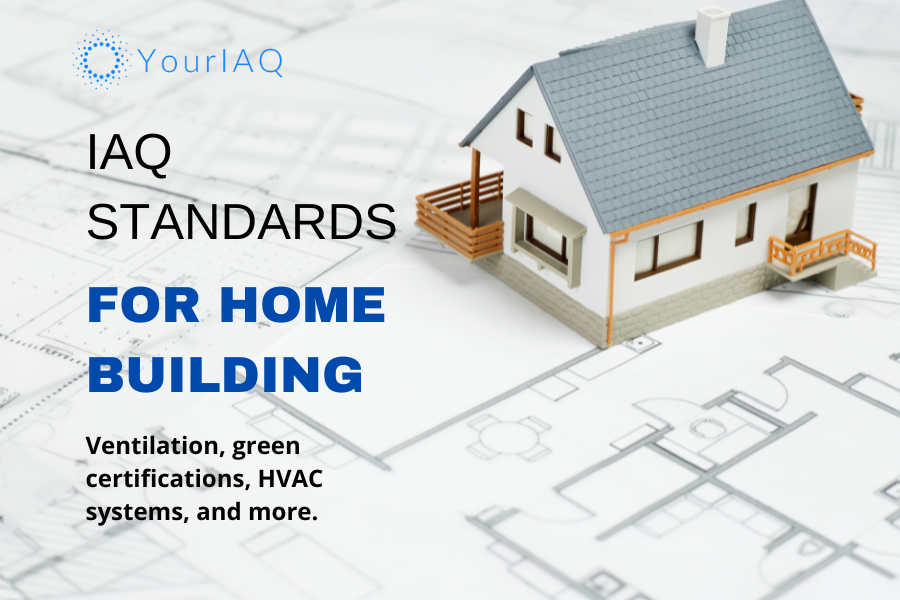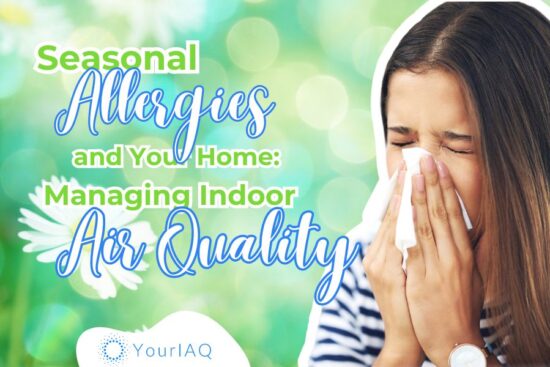
In this blog post, we’ll delve into the connection between indoor air quality (IAQ) and home building standards. Whether you’re a new homeowner, a seasoned builder, or just curious about the air you breathe indoors, the purpose of this guide is to enlighten you with some basics on how building standards significantly impact IAQ.
Understanding the Basics: Why IAQ Matters
Indoor air quality isn’t just a buzzword; it’s a crucial aspect of our daily lives. The air inside our homes can significantly affect our health, comfort, and well-being. But how do building standards play a role in this? Let’s dive in!
DID YOU KNOW? The Environmental Protection Agency (EPA) reports that Americans, on average, spend about 90% of their time indoors, where pollutant concentrations can be 2 to 5 times higher than outdoor levels.
The Impact of Building Materials on Indoor Air Quality
Did you know the materials used in your home can affect the air you breathe? From paint to flooring, many common building materials emit volatile organic compounds (VOCs) that can degrade indoor air quality. Choosing low-VOC or VOC-free materials is a simple step to healthier air.
DID YOU KNOW? Choosing low-VOC or VOC-free materials can reduce indoor VOC levels by up to 80%, significantly improving air quality. (U.S. Green Building Council)
Ventilation Standards and Their Role in Fresh Air Exchange
Adequate ventilation is key to maintaining good indoor air quality. Ventilation standards, such as those set by ASHRAE, ensure that homes have the right balance of air exchange, reducing pollutant concentrations and bringing in fresh outdoor air.
DID YOU KNOW? According to the American Society of Heating, Refrigerating and Air-Conditioning Engineers (ASHRAE), proper ventilation can reduce indoor air pollutant concentrations by up to 90%.
Balancing Act: Energy Efficiency and Air Quality
In the quest for energy efficiency, homes are becoming more airtight. While this is great for energy bills, it can trap pollutants indoors. The solution? Intelligent design that pairs energy efficiency with effective ventilation systems.
DID YOU KNOW? According to the Environmental Protection Agency (EPA), homes built to strict energy-efficiency standards can have up to 80% lower air exchange rates than traditional homes. This can trap indoor air pollutants and increase the risk of health problems like respiratory illnesses and allergies.
Green Building Certifications: Paving the Way for Healthier Air
Green building certifications like LEED and WELL have set the bar high for indoor air quality standards in buildings. These programs emphasize the use of healthier materials and better building practices to enhance indoor air quality.
DID YOU KNOW? Buildings certified under green building programs like LEED and WELL are 25% more likely to have good indoor air quality than non-certified buildings. (U.S. Green Building Council)
HVAC Systems: The Unsung Heroes of Indoor Air Quality
Your HVAC system does more than heat and cool your home; it plays a pivotal role in maintaining indoor air quality. Regular maintenance, proper filtration, and choosing the right system are crucial for clean indoor air.
DID YOU KNOW? The American Society of Heating, Refrigerating and Air-Conditioning Engineers (ASHRAE) states that a well-maintained HVAC system can remove up to 50% of airborne pollutants.
Navigating Government Regulations and Indoor Air Quality Standards for Buildings
Government regulations play a vital role in setting indoor air quality standards for buildings. Familiarizing yourself with these regulations can help ensure your home meets the necessary standards for healthy indoor air.
DID YOU KNOW? In the United States, the Environmental Protection Agency (EPA) sets national standards for six key outdoor air pollutants, which indirectly impact indoor air quality.
Renovations: Improving Air Quality in Your Existing Home
Thinking about renovating? This is the perfect opportunity to improve your home’s air quality. From choosing the right materials to updating your HVAC system, small changes can make a big difference.
DID YOU KNOW? A National Association of Home Builders (NAHB) survey found that only 33% of home renovations include improvements to indoor air quality, such as better ventilation and low-VOC materials.
Final Thoughts
As we’ve explored, the relationship between home building standards and indoor air quality is both intricate and essential. From the materials used in our homes to the systems that regulate our indoor environment, each component plays a pivotal role in determining the air we breathe. By staying informed and making conscientious choices, whether in construction, renovation, or daily living, we can significantly enhance our indoor air quality.
FAQs: Quick Insights on Indoor Air Quality
Can indoor plants improve air quality?
Yes, some studies have found certain plants can remove air toxins from indoor air. However, plants alone are unlikely to make a huge difference if substantial concentrations of contaminants are present.
How often should I change my HVAC filters for better air quality?
Every 3 months is typical, but consult your system’s guidelines for best practices.
Are air purifiers effective in improving indoor air quality?
Yes, air purifiers are especially helpful for allergen and pollutant removal in specific rooms.
Can opening windows improve indoor air quality?
Yes, it increases ventilation and can reduce indoor pollutants, depending on outdoor air quality.







